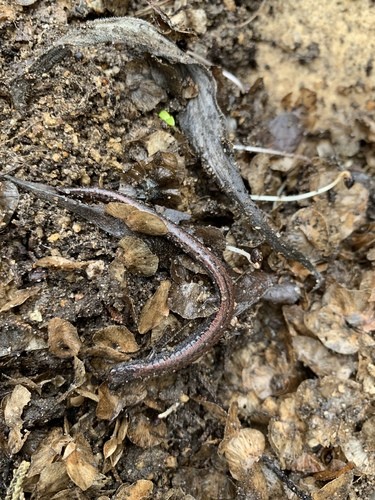Santa lucia mountains slender salamander
A species of Slender salamanders Scientific name : Batrachoseps luciae Genus : Slender salamanders
Santa lucia mountains slender salamander, A species of Slender salamanders
Scientific name: Batrachoseps luciae
Genus: Slender salamanders
Content
Description General Info
 Photo By sullivanribbit , used under CC-BY-NC-4.0 /Cropped and compressed from original
Photo By sullivanribbit , used under CC-BY-NC-4.0 /Cropped and compressed from original Description
The Santa Lucia Mountains slender salamander (Batrachoseps luciae) is a species of salamander in the family Plethodontidae. It is endemic to California in the United States, where it is known only from Monterey County.
General Info
Lifespan
5-10 years
Diet
Santa lucia mountains slender salamander primarily feeds on small invertebrates such as spiders and insects. It is especially attracted to ants, mites, and beetles, reflecting an insectivorous dietary preference.
Appearance
Santa lucia mountains slender salamander is a small, slender salamander with smooth, moist skin. Its coloration ranges from light to dark brown, often with a subtle mottling pattern. It exhibits a unique segmented appearance due to prominent grooves along the sides of its body. Some individuals also have a faint dorsal stripe. There are no significant differences in appearance between sexes or due to age.
Behavior
Santa lucia mountains slender salamander is a primarily solitary creature, with socialization mainly taking place during mating. Its behavior is largely nocturnal and it feeds on small invertebrates. For shelter, santa lucia mountains slender salamander is known to inhabit moist environments like leaf litter, under bark, or in crevices. It displays high site fidelity, marking its territory chemically. Notable adaptations include a coloration that aids in camouflage within its forest floor habitat.
Population
Stable
Scientific Classification
Phylum
Chordates Class
Amphibians Order
Salamanders Family
Lungless salamanders Genus
Slender salamanders